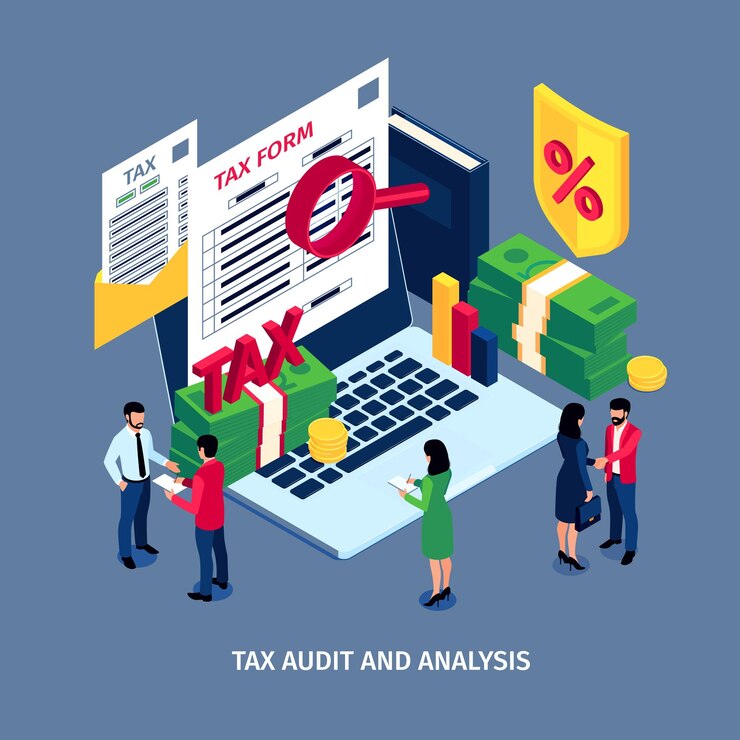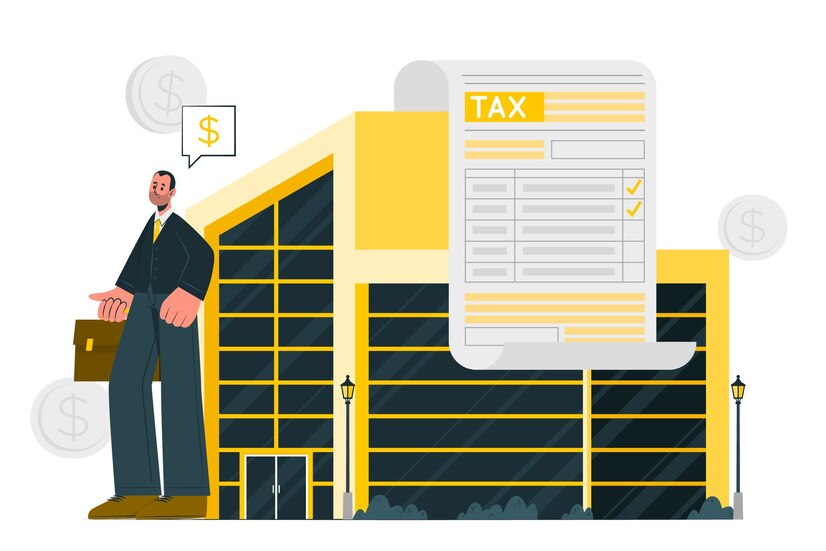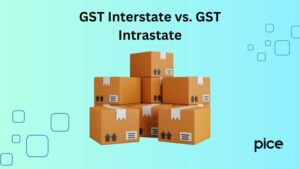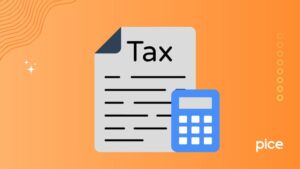Simplified Guide to Understanding GST Annexure 1
- 14 Aug 24
- 11 mins

Simplified Guide to Understanding GST Annexure 1
Key Takeaways
- FORM GST Annexure 1 is essential for declaring outward supplies and ensuring compliance within the GST framework.
- The form captures detailed invoice information, which is critical for accurate tax calculation and maintaining up-to-date compliance records.
- GST ANX-1 is structured to handle various types of transactions, including B2B, B2C, exports, and transactions with unregistered persons, enhancing the transparency of business operations.
- Utilizing offline tools for preparing GST ANX-1 can significantly reduce errors and streamline the filing process, especially for businesses with large volumes of data.
- Regular reconciliation of GST ANX-1 with GST ANX-2 is crucial for the smooth processing of input tax credits and minimizing discrepancies in tax reporting.
Introduction to FORM GST Annexure 1
FORM GST Annexure 1, officially recognized as GST ANX-1, is a crucial component in the streamlined compliance mechanism under the Goods and Services Tax (GST) in India. This form serves as a declaration of outward supplies by taxpayers and is part of the New Return System introduced to simplify the filing process and enhance transparency in the documentation of transactions.

GST ANX-1 is primarily designed to capture detailed information about the invoices related to outward supplies made by a business, including taxable sales and exports. It is used by registered taxpayers to report their monthly or quarterly business transactions, capturing data on sales to other registered businesses (B2B), sales to consumers (B2C), and exports, among other transaction types. The purpose of this form is to ensure that all outward supplies are accurately recorded for tax calculation and compliance purposes, enabling a seamless input tax credit mechanism across the supply chain.
The introduction of FORM GST ANX-1 marks a significant step in the GST filing process, aiming to replace the existing GSTR-1 form as a part of the new return system, which is intended to simplify the return experience for taxpayers and reduce the compliance burden. By efficiently capturing transaction details, it helps in the preliminary verification of transactions, facilitating easier and more accurate matching with the corresponding entries in FORM GST ANX-2, which pertains to inward supplies. This mechanism is critical for the automatic reconciliation of invoices, thereby enhancing the efficiency of the GST framework and minimizing the scope for discrepancies and fraud in tax reporting.
Key Elements of FORM GST Annexure 1
FORM GST Annexure 1, or GST ANX-1, is designed to comprehensively capture the details of outward supplies, ensuring accurate reporting and compliance with GST regulations. Here are the key elements that make up this important form:
- GSTIN of Supplier: Every entry in the form must include the GST Identification Number (GSTIN) of the supplier, which is essential for identifying the business entity and linking all transactions to the correct taxpayer.
- Buyer Details: For business-to-business (B2B) transactions, GST ANX-1 requires the inclusion of the GSTIN of the buyer, allowing for proper tracking and verification of purchases and sales between registered entities.
- Invoice Details: The form captures comprehensive invoice information, including invoice numbers, the date of issue, and the place of supply. This data is critical for the chronological tracking of transactions and ensuring the locality-specific tax implications are correctly applied.
- Taxable Value and Tax Amount: Each entry must detail the taxable value of the supply and the corresponding tax amount, broken down into Central GST (CGST), State GST (SGST), and Integrated GST (IGST), depending on the nature and location of the transaction. This breakdown is crucial for accurate tax calculation and reporting.
- HSN/SAC Codes: The Harmonized System of Nomenclature (HSN) for goods and the Service Accounting Code (SAC) for services are also required on GST ANX-1. These codes help classify items or services for systematic recording and compliance with tax regulations.
- Type of Supply: The form differentiates between various types of supplies, such as B2B, B2C (large and small), exports (with or without payment of tax), Supplies to Special Economic Zones (SEZ) (with or without payment of tax), and Deemed Exports. This classification is important for applying the correct tax rules and rates.
- Amendments: Any revisions or corrections to previously filed returns can also be reported in GST ANX-1. This feature is essential for maintaining the integrity and accuracy of tax records over time.
- Document Type: The form allows the classification of documents not just as invoices but also as bills of entry, credit notes, and debit notes. This versatility ensures that all relevant documents are accounted for and appropriately categorized.
Each of these elements plays a critical role in ensuring that GST ANX-1 serves its purpose as a detailed record of outward supplies. By meticulously filling out these sections, taxpayers can maintain precise records that facilitate smooth and compliant tax operations.
Essential Tips for Filing FORM GST Annexure 1
Filing FORM GST Annexure 1 accurately is crucial for adhering to GST regulations and avoiding possible penalties. Here are several important tips to assist taxpayers in effectively managing the process:
Before submitting FORM GST Annexure 1, it is vital to double-check all entries for accuracy. Make sure that the GSTINs, invoice numbers, and tax amounts are correctly recorded to avoid discrepancies that could complicate the reconciliation process and lead to compliance issues. Maintaining up-to-date records of all transactions that need to be reported in GST ANX-1 is essential; organized record-keeping aids in easier preparation and faster filing of the form, especially with large data volumes.
It's important to fully understand the reporting requirements for different types of supplies such as B2B, B2C, exports, and supplies to SEZs. Each category has specific fields and particulars that need to be accurately filled out to comply with GST laws. Using the GSTN-provided offline tool to prepare your GST ANX-1 can be incredibly helpful; this tool allows for the import of bulk data, performs validations, and prepares the annexure for upload without needing an active internet connection, which can significantly reduce errors associated with manual entry.

Stay informed about any updates or changes in GST regulations that affect the filing of GST ANX-1. Regularly review and revise previous entries if necessary to include any modifications such as additional invoices or corrections to previously filed data. Adherence to filing deadlines is crucial to avoid penalties and interest on late submissions, and timely filing also ensures that the recipients of your supplies can claim their input tax credits without delays.
Additionally, ensure that the data filed in GST ANX-1 aligns with the corresponding entries in GST ANX-2, which pertains to inward supplies. This reconciliation is crucial for the smooth processing of input tax credits. If you are unsure about any aspect of filing GST ANX-1, consider seeking advice from a GST expert or a tax professional who can provide clarity on complex issues and ensure that your filings are compliant with current laws.
Following these guidelines will simplify the process of filing FORM GST Annexure 1 and enhance overall compliance, reducing the risk of errors and the stress associated with GST filings.
Preparing FORM GST Annexure 1 Using Offline Tools
Preparing FORM GST Annexure 1 using offline tools provided by the GST Network (GSTN) is an efficient way to manage the filing process, especially for businesses that deal with a high volume of transactions. Here’s how to effectively use these tools:
- Download the Offline Tool: The first step is to download the official GST offline tool from the GST portal. This tool is designed to help taxpayers prepare their GST filings without needing an active internet connection.
- Input Data: Using the offline tool, input all relevant data for your outward supplies. This includes details such as GSTIN, invoice numbers, dates, taxable values, tax amounts, and HSN/SAC codes. The tool often provides a template which can be filled in Excel or similar spreadsheet software.
- Validate Data: The offline tool comes with built-in validation features that check for errors or inconsistencies in the data entered. This feature helps to ensure that all required fields are correctly filled and that the data complies with GST requirements.
- Generate JSON File: Once the data has been validated and all errors have been corrected, the tool allows you to generate a JSON file. This file format is used for uploading the data to the GST portal.
- Upload to GST Portal: With the JSON file ready, the next step is to log into the GST portal and upload this file under the relevant section for FORM GST Annexure 1. This process completes the preparation and initial submission phase.
Using offline tools to prepare FORM GST Annexure 1 not only simplifies the filing process but also significantly reduces the chances of errors that can occur with manual data entry directly on the portal.
💡If you want to pay your GST with Credit Card, then download Pice Business Payment App. Pice is the one stop app for all paying all your business expenses.
Navigating GST Annexure 1
Navigating through FORM GST Annexure 1 efficiently requires an understanding of its structure and the specific requirements for reporting various types of transactions. Here are key aspects to consider:
- Familiarize with the Format: Understand the layout of FORM GST Annexure 1, which includes multiple sections for different types of supplies (e.g., B2B, B2C, exports, SEZ supplies, and others). Knowing where each type of transaction should be reported is crucial.
- Detailing Transactions: Each transaction in GST Annexure 1 must be detailed with accurate information about the supply, including the GSTIN of buyers in B2B transactions, details of the goods or services supplied, and the applicable tax rates.
- Revisions and Amendments: If you need to amend any previously submitted information in GST Annexure 1, familiarize yourself with the process for making amendments on the GST portal. Amendments may be necessary due to invoicing errors, return of goods, or changes in tax liability.
- Integration with Other Forms: Understand how GST Annexure 1 interacts with other GST forms, particularly GST Annexure 2, which deals with inward supplies. Ensuring that the data in GST Annexure 1 matches the corresponding entries in GST Annexure 2 is important for the accurate claiming of input tax credits.
- Monitoring and Reporting: Regular monitoring and reporting are vital to navigate GST Annexure 1 effectively. This includes keeping track of filing deadlines, ensuring compliance with the latest GST regulations, and maintaining records that support the entries made in the form.
By mastering these aspects, taxpayers can navigate FORM GST Annexure 1 more confidently and ensure their GST compliance is accurate and timely.
 By
By 
















